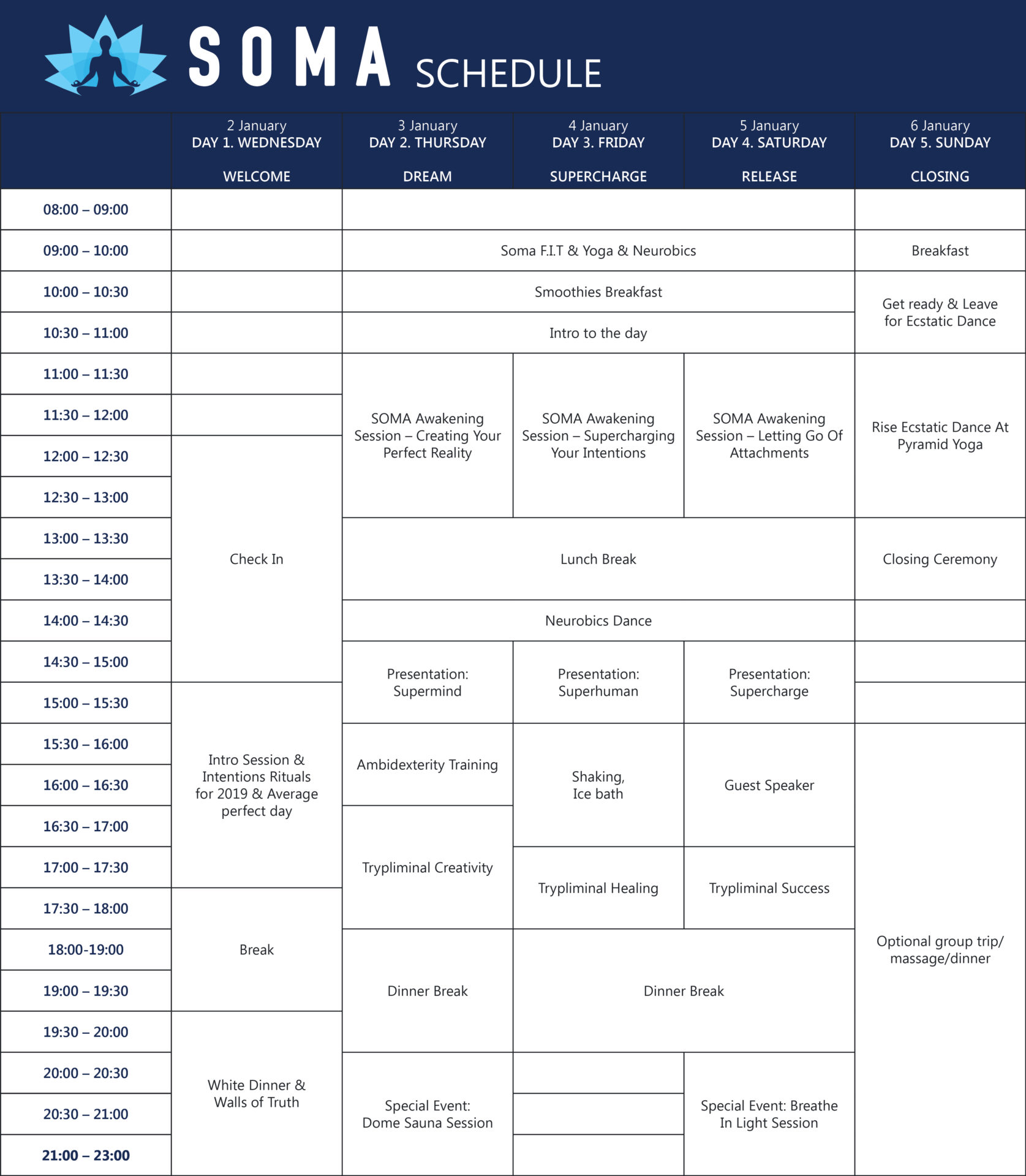Cerebrospinal fluid plays a vital role in our overall health and well-being. We can voluntarily regulate the flow of cerebrospinal fluid to ensure a healthy brain and body. The best way to do this is through Pranayama exercises like SOMA Breath.
Cerebrospinal fluid (CSF) is a clear liquid produced by specialised cells in the brain. The brain produces about 500mL of CSF per day (25mL per hour), but there is only about 125-150mL of CSF in your body at any given time because it is always being reabsorbed by the body.
Cerebrospinal fluid is found in the membrane surrounding the brain, and in the cavities inside your brain and spinal cord (the ventricular system). Cerebrospinal fluid provides vital functions in your body:
- Buoyancy – the average brain weighs roughly 1.5kG, but the net weight suspended in CSF is around 50G. This makes sure that the brain can maintain its density without damaging itself by its own weight!
- Protection – Cerebrospinal fluid is a shock absorber for the brain. It protects the brain tissue from damage in case there is an impact force.
- Homeostasis – The dynamic balance of internal chemical and physical systems is regulated by our CSF. It allows substances to pass between brain cells and the cells that release hormones into the blood (neuroendocrine cells). If this homeostasis is disturbed, it can cause problems like dizziness or even damage to the nervous system.
- Clearing waste – Cerebrospinal fluid plays a vital role in the brain’s lymphatic system by removing waste products from the brain. The waste is diffused into CSF, moved from the brain, and reabsorbed (as CSF) by the bloodstream to be cleared away.
How Does CSF Move Up And Down The Spinal Cord?
Breathing moves CSF through the body thanks to the pressure in the veins of our chest. These veins on the chest vertebrae column (the vertebrae at the same level as your ribs) transmit pressure upwards, to the brain.
When you breathe, the chest rises and falls. This creates a change in pressure that flows upwards to the CSF around the brain. There is no difference in CSF flow, regardless of whether you use “chest” or “belly” breathing, but there is a difference in the strength of breath you use. More forced breaths, encourage greater CSF flow (Aktas et al., 2019).
Breathing creates a rhythmic flow of CSF up and down the spinal cord. Your heart beat also affects CSF flow. MRI scans have shown directly how breathing affects CSF flow (Yamada et al. 2013).
Studies have shown that the deeper or shallower we breathe, directly influences the movement of CSF through the brain. Deeper inhales encourage CSF further up into the brain (Dreha-Kulaczewski et al., 2018). There has also been research to show that holding your breath pauses the flow of CSF (Dreha-Kulaczewski et al., 2015).
Cerebrospinal Fluid and Brain Health
The movement of CSF is really important to our health. The pressure of CSF flow decreases with age (Fleischman et al., 2010), which means it can collect impurities and proteins related to neurodegenerative diseases (Robey & Panegyres, 2019). This results in impaired brain function like fatigue, depression (Ditzen et al., 2012), anxiety (Mann et al., 2014), and is linked with neurodegenerative diseases like Alzheimer’s (Mattsson et al., 2009) and Parkinson’s (Siderowf et al., 2010).
What’s more, the activation of the sympathetic nervous system is linked to reduced CSF flow (Sakka et al., 2011). In theory, that would mean activating the parasympathetic nervous system more often could help counteract this.
This goes to show just how effective SOMA breathing techniques can be for brain health!
Another way to optimise CSF flow in your body is to exercise. Exercise gets the lymphatic systems pumping, blood circulation going, and CSF flow increases as a result of a higher heart rate and more forced breathing.
Try our free breathwork masterclass to find out the best techniques to keep your CSF flow and your brain health at their best! You may also enrol for the breathwork facilitator training that equips instructors and aspiring facilitators with transformational skills that further help enhance their clients' overall well-being.


It is great to have scientific proof of the efficacy of techniques I have used over the past 60/65 years. Thank you for sharing. xxx
You’re very welcome Maureen!